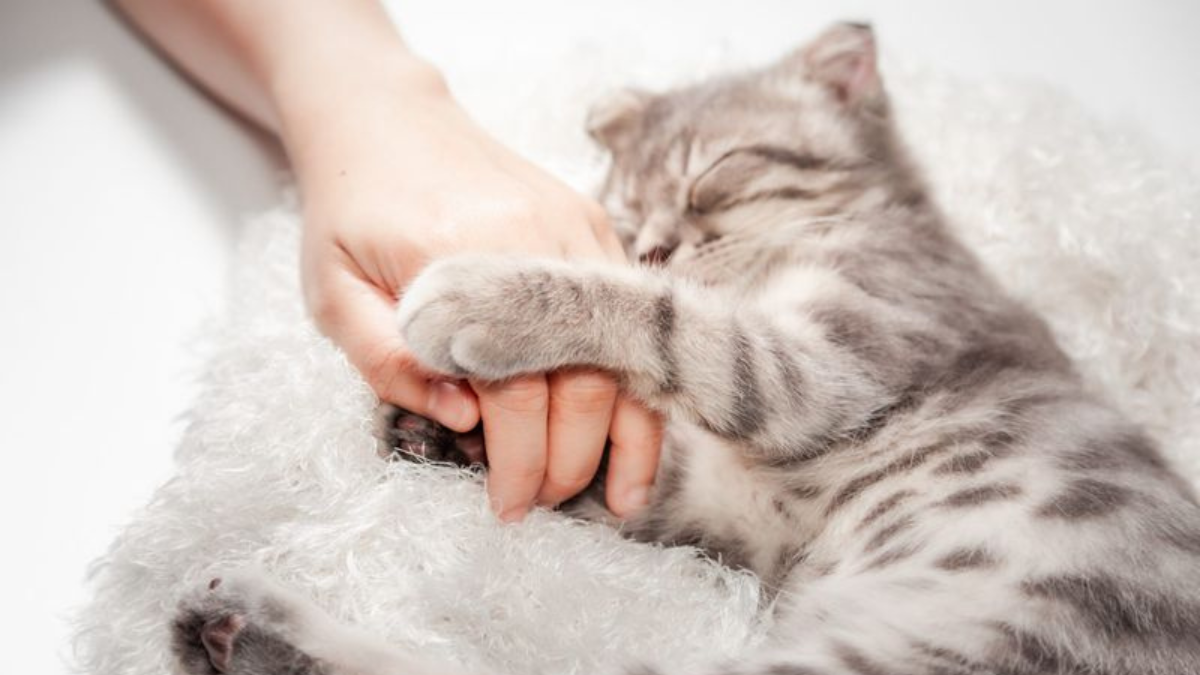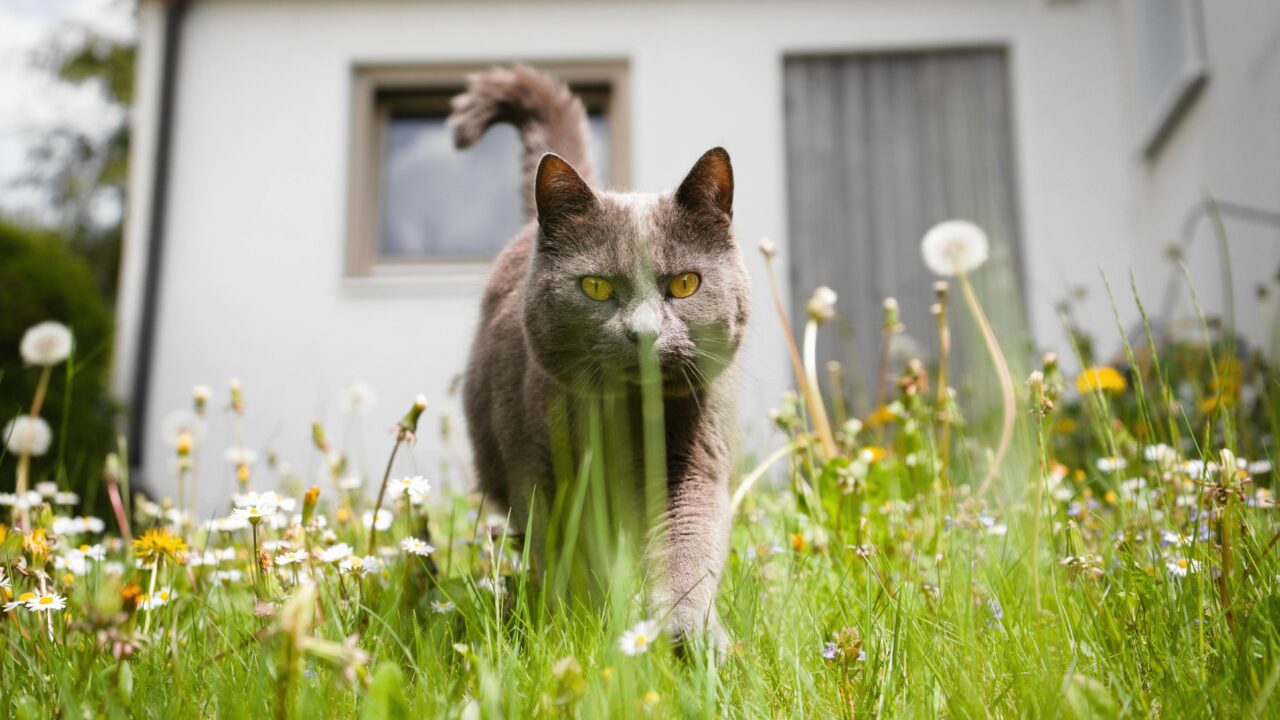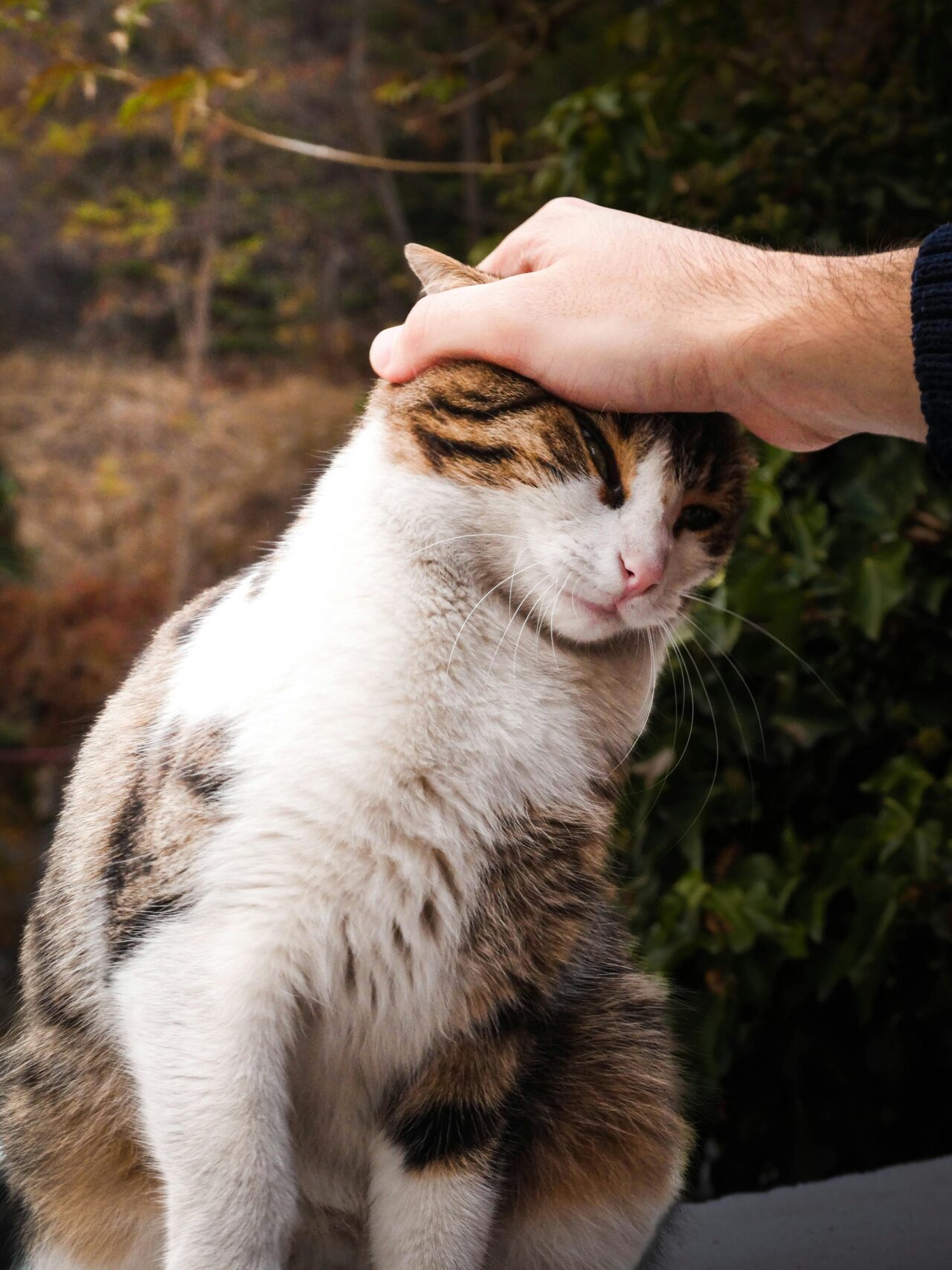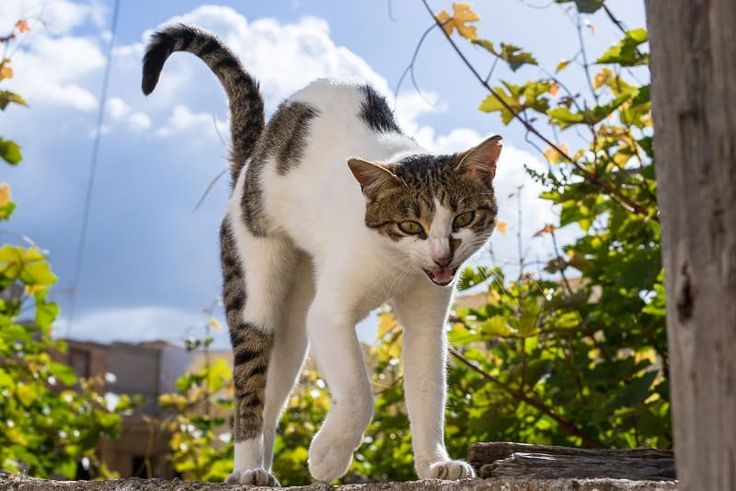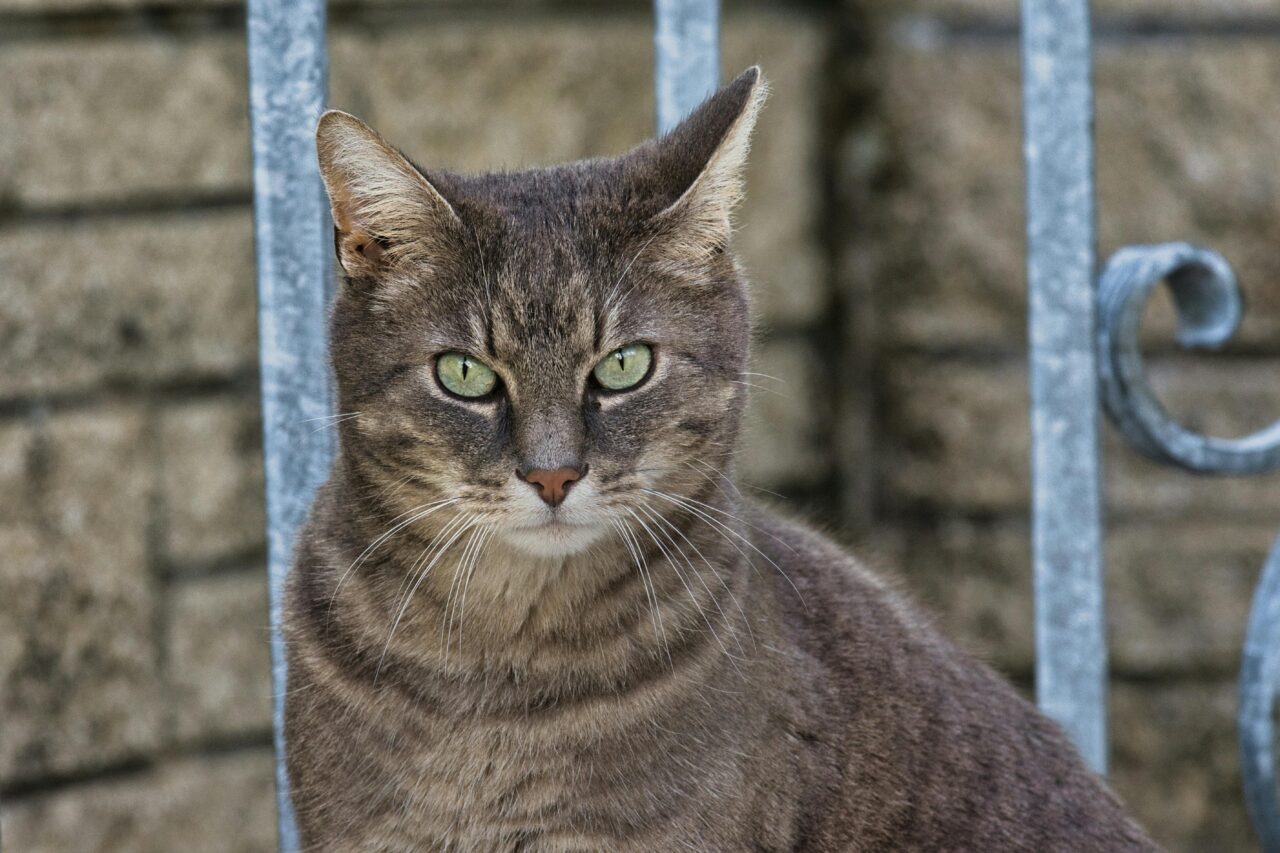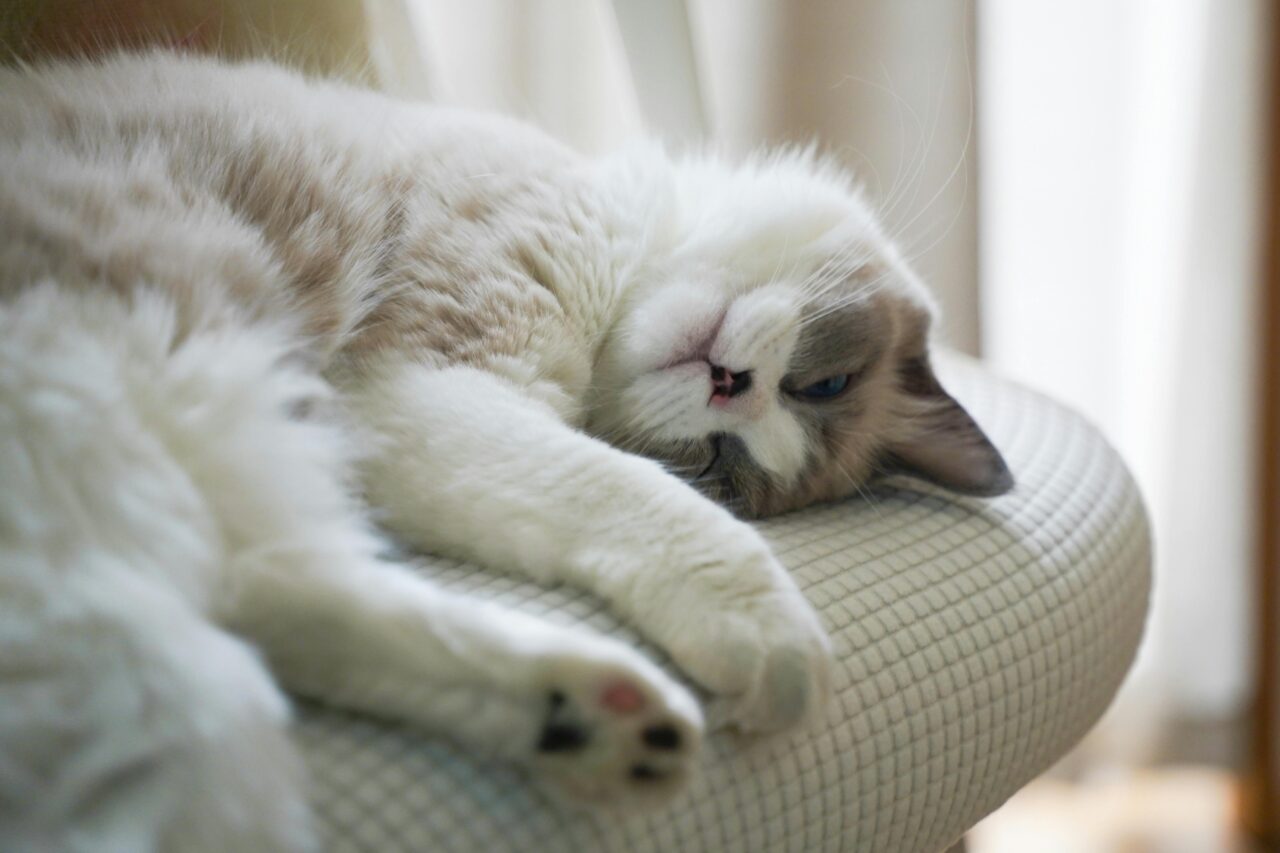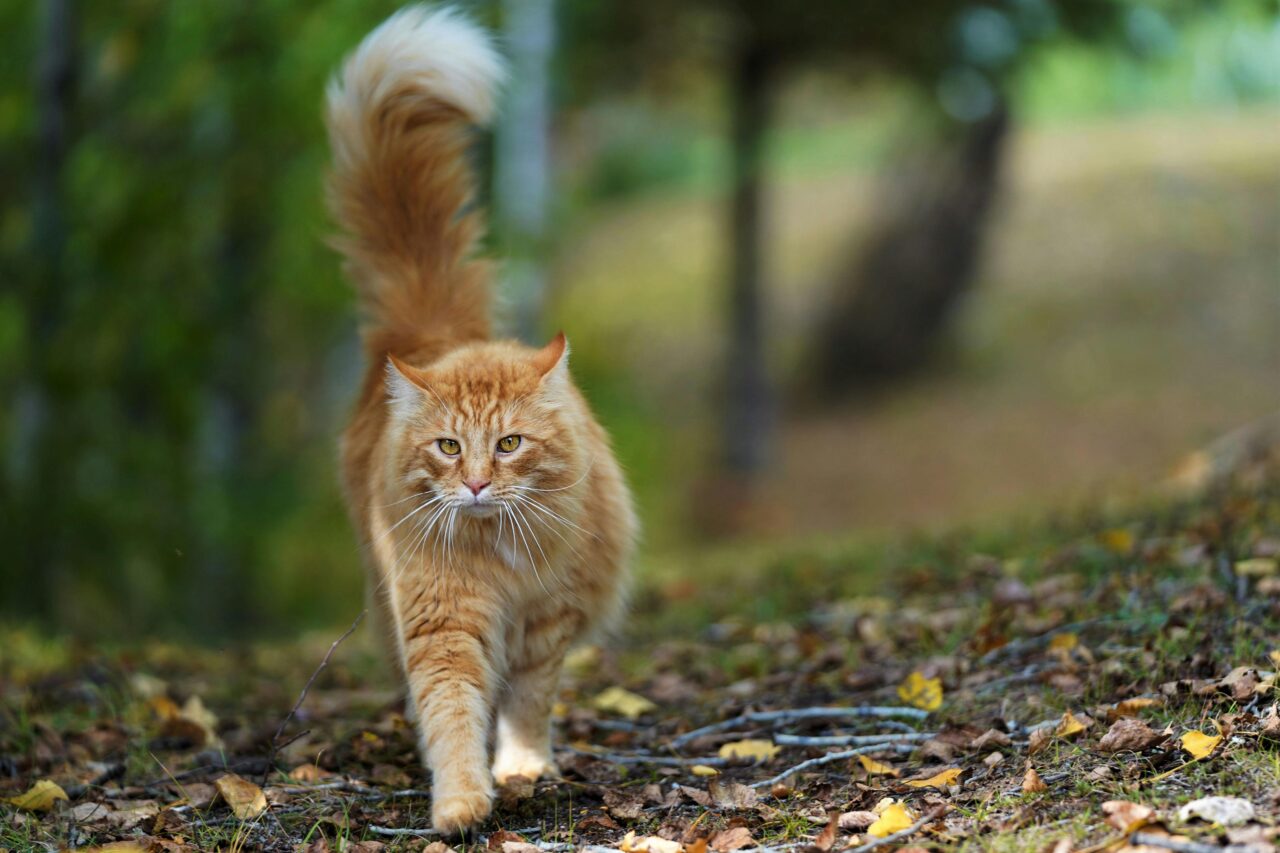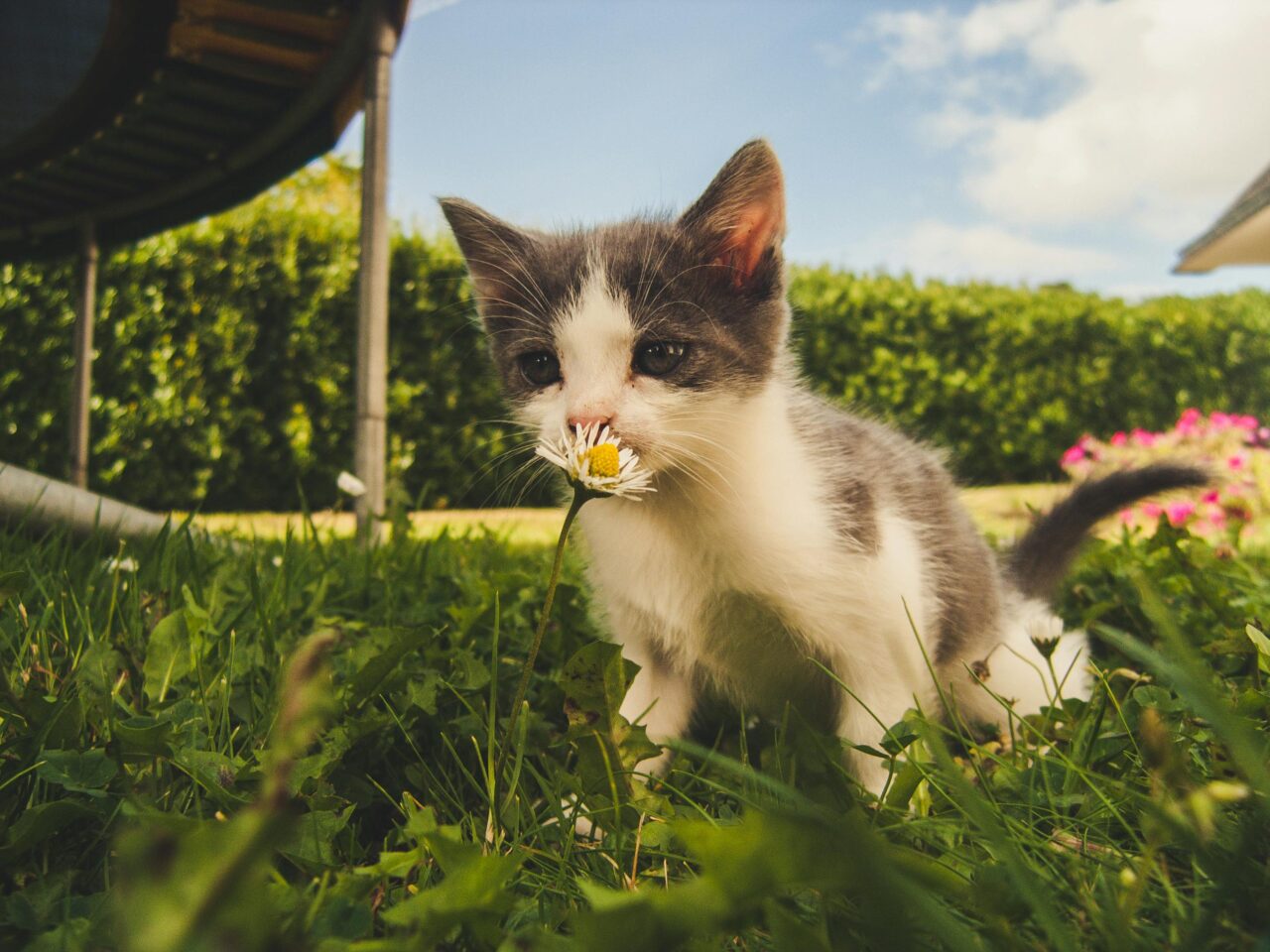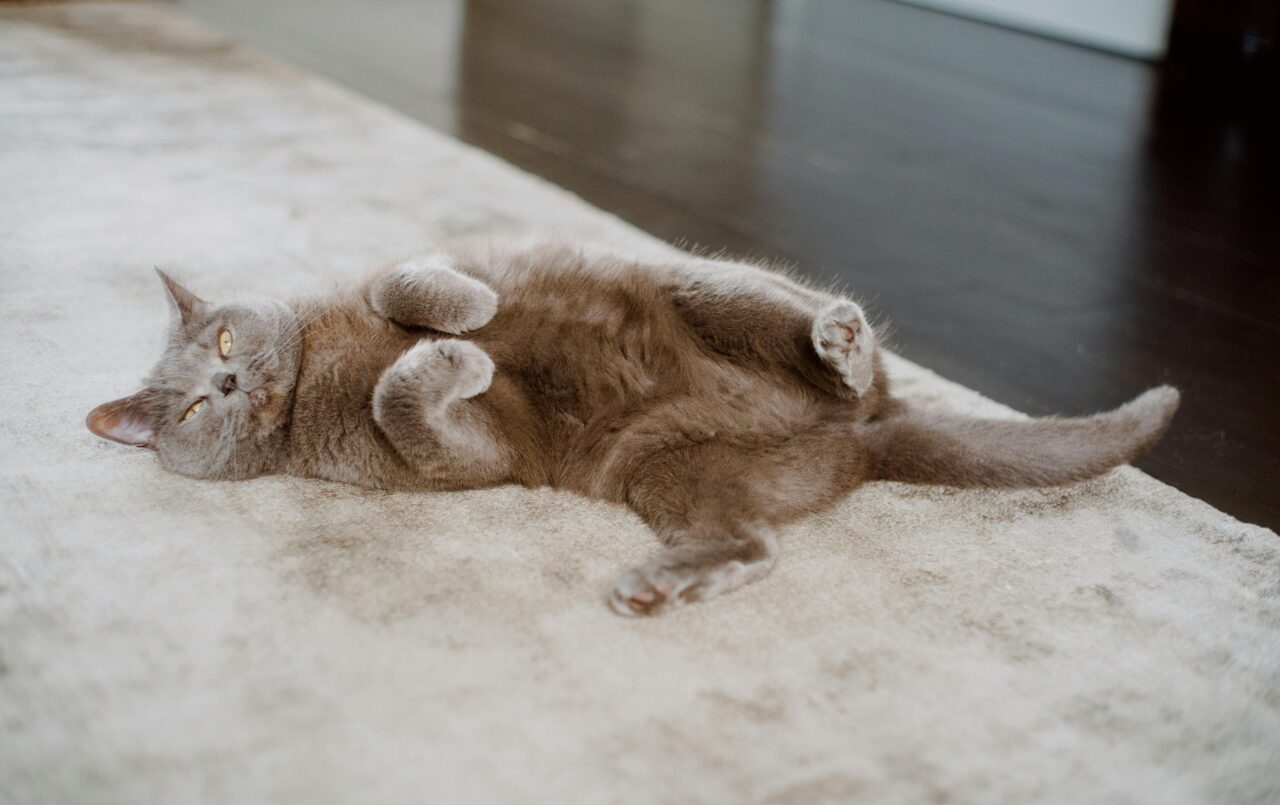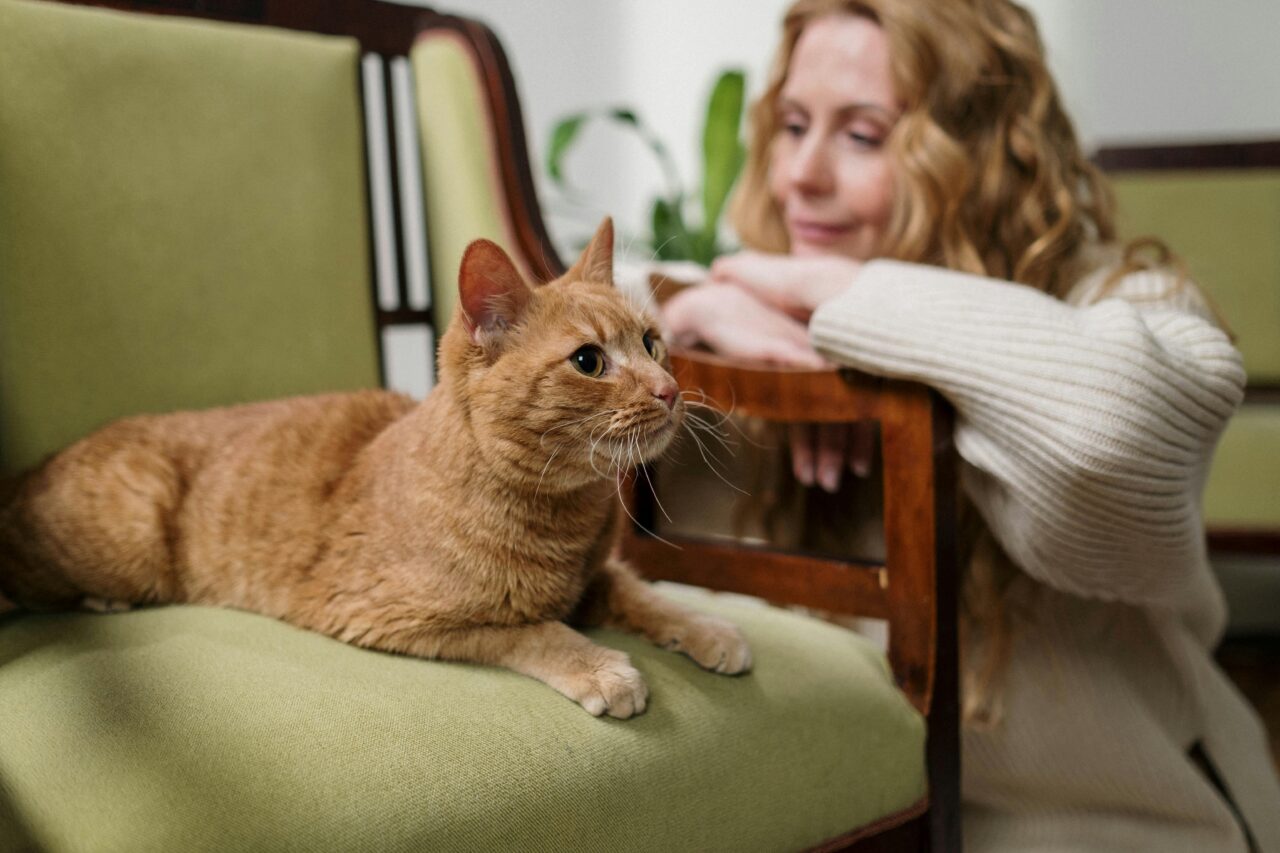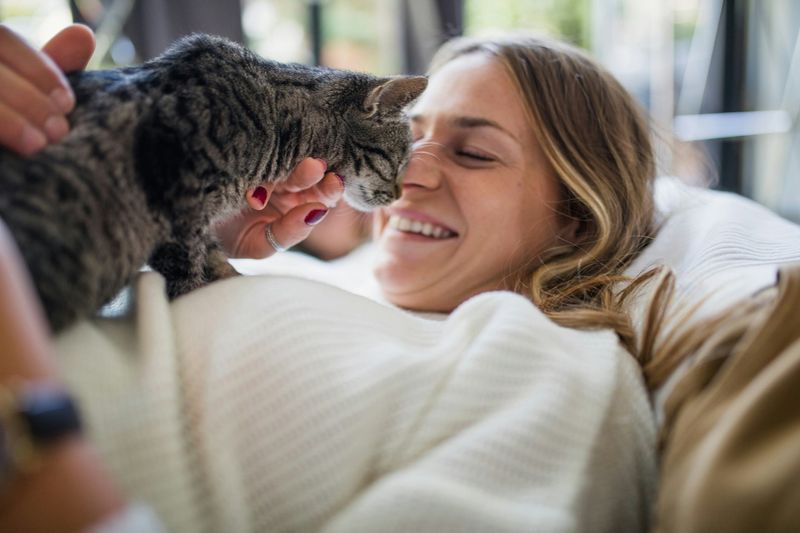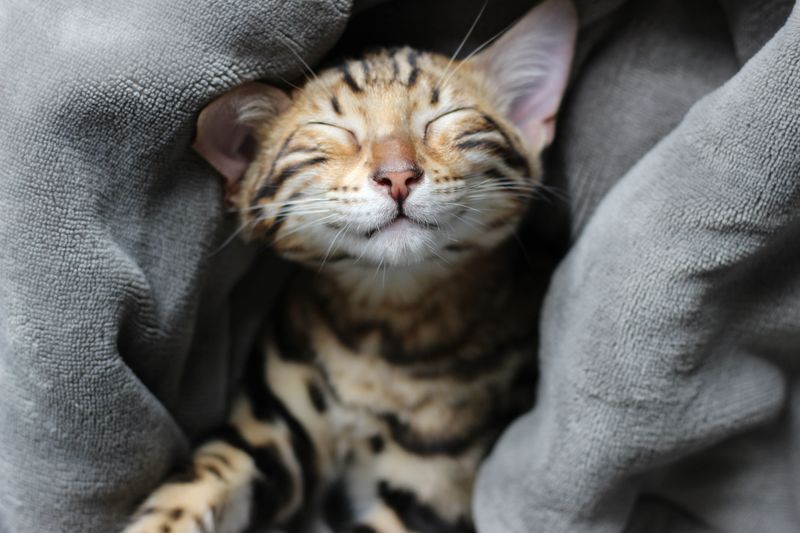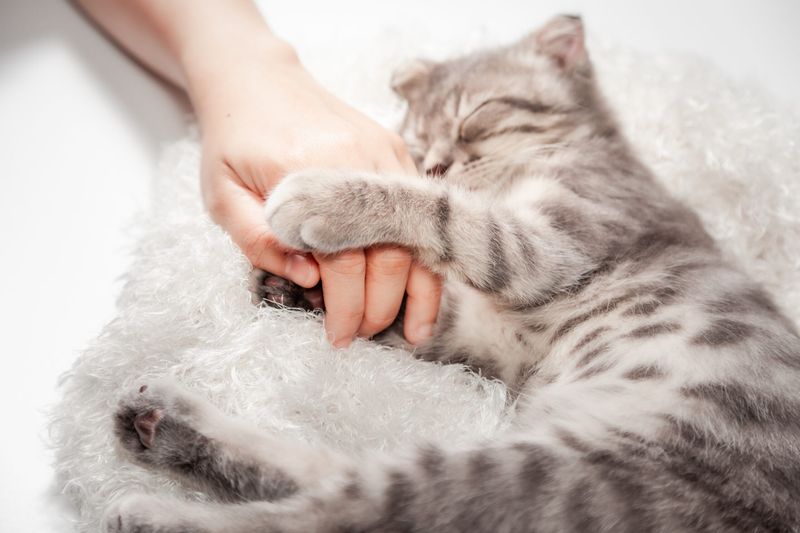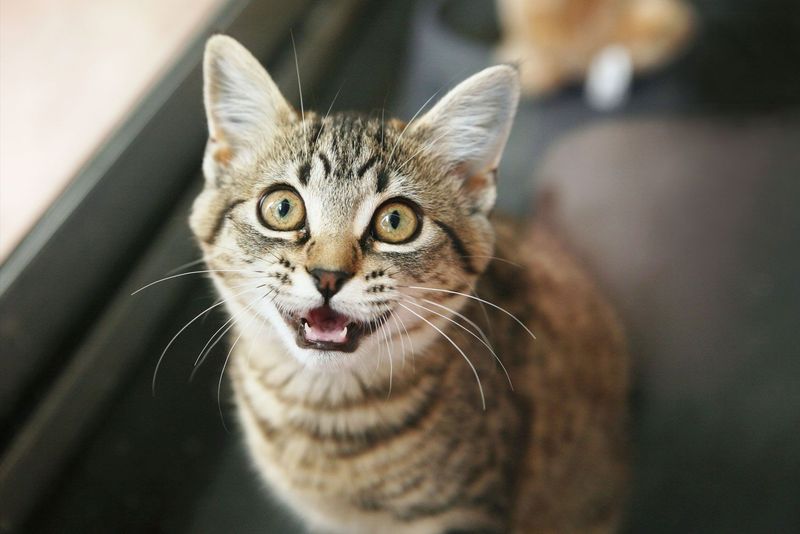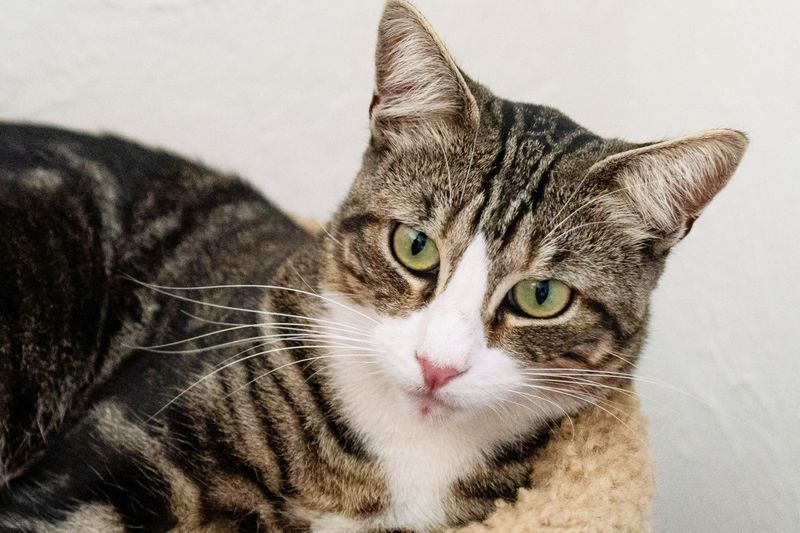📖 Table of Content:
- 1. The Tale of the Tail
- 2. The Power of Slow Blinks
- 3. The Art of the Arch
- 4. Ears That Speak Volumes
- 5. Paw Language
- 6. Whisker Whispers
- 7. Silent Footsteps
- 8. Nose Nudges
- 9. The Languid Lounge
- 10. Silent Shadows
- 11. The Headbutt of Affection
- 12. The Purr of Contentment
- 13. The Nibble of Trust
- 14. The Chatter of Curiosity
- 15. The Gaze of Trust
Cats are masters of nonverbal communication, weaving an intricate language of gestures, stares, and subtle movements. If you’ve ever wondered what your feline friend is trying to say without making a sound, their body language holds all the answers.
1. The Tale of the Tail
Your cat’s tail is a powerful storytelling tool. When it’s upright and quivering, it often signals excitement or affection. A low, tucked tail might hint at fear or uncertainty, while a puffed-up tail is a surefire sign of alarm. Slow, swishing movements can show irritation, especially if they grow more intense.
On the other hand, a gently twitching tip while lounging might just mean they’re curious or content. Paying attention to the tail’s position and motion can reveal a lot about their mood.
2. The Power of Slow Blinks
If your cat gives you a slow, deliberate blink, they’re not just sleepy—they’re expressing trust and love. This action, often called a “cat kiss,” is a feline way of saying they feel safe around you. Return the gesture with your own slow blink to strengthen your bond.
A fixed stare, in contrast, can signal dominance or discomfort, especially toward unfamiliar faces. When meeting a new cat, avoid direct eye contact to appear non-threatening. Those soft blinks are a secret handshake in cat communication.
3. The Art of the Arch
When a cat arches its back, it’s not always about looking scary. A sharply raised back paired with fluffed-up fur is a defensive posture, often seen when they feel threatened. A soft, gentle arch during stretching, however, is a sign of relaxation and comfort.
If they rub their arched back against you, consider it an affectionate greeting. The way a cat holds its back can tell you if they’re feeling playful, fearful, or downright cozy. Each curve is worth noticing.
4. Ears That Speak Volumes
Cat ears are incredibly expressive, swiveling like tiny satellite dishes to capture sounds and share feelings. Forward-facing ears show they’re curious or content, while flattened ears mean fear, aggression, or overstimulation.
One ear tilted sideways can suggest confusion or caution. Rapid swiveling might indicate they’re tracking a sound or feeling uneasy. A cat whose ears remain alert but relaxed is usually at ease. Their ears are like mood rings in motion, constantly updating their status.
5. Paw Language
Those soft, adorable paws are more expressive than they seem. When cats knead with their paws, it’s a sign of comfort and contentment rooted in kittenhood. Scratching, while often territorial, can also express excitement or a need for exercise.
A gentle tap or pawing at your leg might mean they want attention—or food. Watch for raised paws during play; it’s a signal they’re ready to pounce. Even their choice of surfaces for scratching can hint at their mood or needs.
6. Whisker Whispers
A cat’s whiskers are like antennas, constantly reading their surroundings and sharing their feelings. Whiskers pulled back against the face indicate fear or aggression, while forward-facing whiskers mean curiosity or excitement. If the whiskers seem relaxed and symmetrical, your cat is likely content.
During feeding, whiskers spread outward to maximize sensory input and maneuverability. Overstimulated cats may fan their whiskers widely before retreating. The subtle shifts in whisker position are a fascinating insight into their inner world.
7. Silent Footsteps
Your cat’s stance and stride reveal their confidence and emotions. A low, crouching walk usually indicates hunting mode or nervousness. Standing tall with a relaxed posture shows confidence and ease. If they roll onto their back and expose their belly, it might be an invitation to play—or a test of trust.
A hesitant, frozen stance often signals fear or uncertainty. Cats also use their bodies to block or guide you toward something they want, like their food bowl. Each movement is a clue to their thoughts.
8. Nose Nudges
A gentle nose nudge or “boop” is a heartwarming sign of trust and affection. Cats have scent glands around their noses, and this behavior transfers their scent to you, marking you as part of their safe space. They might nudge you to get attention or as a simple greeting.
If your cat nudges objects, they’re likely marking territory or exploring their environment. This silent gesture carries deep emotional significance. With every nudge, they’re speaking volumes about their connection to you.
9. The Languid Lounge
Even a lounging cat is saying something. When they curl into a tight ball, they’re conserving warmth and feeling secure. A sprawled-out, belly-up position means they’re relaxed and trust their surroundings. Sitting loaf-style with paws tucked under shows calm contentment but readiness to move if needed.
Watch for twitching tails or ears while they lounge, as these might hint at lingering energy or annoyance. Cats have mastered the art of restful communication, making even their naps informative.
10. Silent Shadows
When your cat shadows you from room to room, they’re communicating a deep bond without uttering a meow. This behavior can stem from curiosity, affection, or the desire to monitor their environment through you.
If they weave between your legs, they might be marking you with their scent or seeking attention. Following at a distance often shows quiet interest, while a closer pursuit signals urgency. Even their decision to sit near but not on you speaks volumes about their mood.
They’re always speaking—you just have to listen.
11. The Headbutt of Affection
Headbutting is a cat’s way of expressing affection and trust. When your cat gently bumps its head against you, it’s not just marking you with its scent glands but also showing a deep bond. This behavior is a compliment, indicating that your cat sees you as part of its family.
Cats use headbutting to claim and mark their territory, and in this case, you are the cherished property. It’s a way of mingling scents in a shared space, reinforcing the friendship. Next time your feline friend offers a headbutt, respond with gentle scratches as a sign of mutual affection.
12. The Purr of Contentment
While purring is commonly associated with contentment, it can indicate a range of emotions. Cats purr when they feel safe and relaxed, helping to create a calming atmosphere. But purring can also occur during moments of stress or while the cat is recovering, as the vibrations aid in healing and stress relief.
Pay attention to the context and your cat’s body language to discern the true meaning behind the purr. If your cat is nestled in your lap, it likely feels content and secure. Understanding your cat’s purring can help you respond appropriately to its emotional and physical needs.
13. The Nibble of Trust
Gentle nibbles may seem alarming, but they’re often a sign of affection and playfulness. When your cat lightly nibbles, it’s engaging with you like littermates play fighting. This behavior strengthens bonds and shows trust.
However, cats can also nibble when they’re overstimulated. Recognize this by observing the intensity and accompanying body language. A relaxed tail and soft gaze usually indicate playfulness. If nibbles turn to bites, it might be time to give your cat some space. Responding appropriately helps maintain a positive interaction.
14. The Chatter of Curiosity
Chattering is a fascinating feline behavior often observed when a cat spots prey, like birds or squirrels. This sound is a mix of excitement and frustration, as your cat watches prey just out of reach. The rapid jaw movement and high-pitched noise can be intriguing to observe.
Some theories suggest this behavior is an instinctual practice for killing prey. However, it’s mostly harmless and a sign of stimulation and engagement with the environment. Providing toys that mimic prey can satisfy your cat’s hunting instincts and alleviate any chattering-induced frustration.
15. The Gaze of Trust
Eye contact can convey a range of emotions in the cat world. A slow blink from your cat is often referred to as a ‘kitty kiss’ and indicates trust and affection. Responding with a slow blink shows your cat you reciprocate the trust.
Direct staring, however, can be interpreted as a challenge or threat. It’s important to recognize these cues to foster a harmonious relationship. By understanding the nuances of your cat’s eye contact, you can learn to communicate more effectively, reinforcing the bond and reducing potential stress or misunderstandings.
